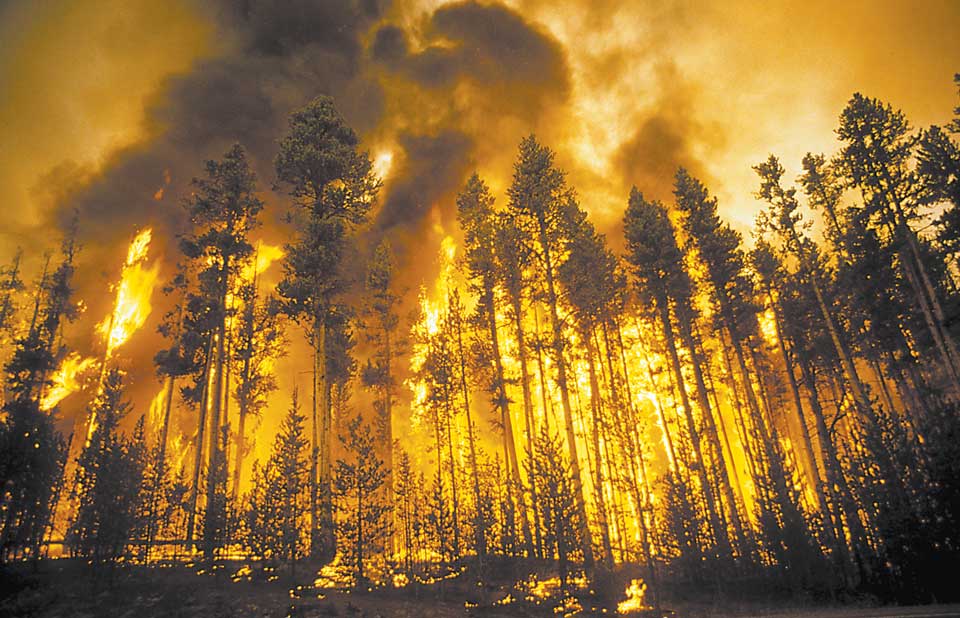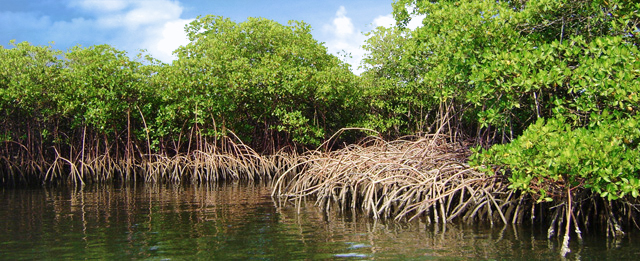Skerples over at Coins and Scrolls wrote about the implications of a dark forest next to town, and how fantasy forests must be maintained.
Noisms of Monsters and Manuals wrote a companion piece to Evlyn M's, of Le Chaudron Chromatique, post (and lovely art) about an elven forest fire fighting game. In both of these posts Patrick Stuart's excellent interview with Dungeon Smash of Dungeon Smashing Empire comes up.
Any way, in the original post I said:
"Now I am not arguing that I want to have D&D accurately simulate or describe forest ecology, I don't think that's especially interesting. What I am arguing for is a more complex look at nature oriented races/classes..."That's not strictly true. I have thought about integrating the principles of forest management/ecology into the way forests are depicted in my games. This is my first attempt at making forest ecology gameable, if you want to skip the ecology lesson look for the next post!
Principles of Forest Ecology:
To better understand forests lets discuss briefly their ecology. Ecology is the study of a of system living things and their relations to themselves and their the non-living environment. Below are some examples of each.
- Abiotic Factors: inorganic soil characteristics, water availability, temperature variability, light availability, slope aspect, etc
- Biotic Factors/Interactions: Trees competing for light in a forest canopy, plants using allelopathy (chemical warfare) to inhibit competition, birds dispersing seeds, beavers biting down trees, wolves influencing grazing patterns of deer that eat regenerating trees, etc
When considering these factors that influence a tree through time we can begin to look at the "natural history" of a species. A good example of why this temporal consideration is useful is the dispersal patterns of tree species we find today in North America. Due to the retreat and advance of species through the periods of glacial and interglacial in the Pleistocene epoch some tree species can be mapped back in time as they reclaim historic ranges that up until (geologically) recently have been covered in glaciers.
All of this information helps us understand what conditions a species is tolerant of and how they cope with the unique challenges of their environments.
 |
| These diagrams are good examples of how we think about forest migration, they are worth enlarging! |
 |
| I love reading about natural history, its like the saga of a tree species. I'll write about it some time |
All of this information helps us understand what conditions a species is tolerant of and how they cope with the unique challenges of their environments.
Disturbance ecology is the study of how ecosystems interact with disturbances. Wild fire is an easily recognized example of a disturbance; but wind throw, flooding, ice storms, land slides, out of season freezes, insect infestations, and fungal pathogens are also examples of forest disturbances. These are the challenges that forests are presented with and adapted to.
The lodgepole pine forests of the northern Midwestern states in the US are dependent on a high severity (i.e. high mortality) but very long return interval (~100-200 year) fire regime to reproduce, their cones wont open without the heat! The wetter forests of the northeast US are used to wind throw and ice storm events that kill single/small groups of trees to open gaps in the forest canopy. The examples are endlessly variable.
The lodgepole pine forests of the northern Midwestern states in the US are dependent on a high severity (i.e. high mortality) but very long return interval (~100-200 year) fire regime to reproduce, their cones wont open without the heat! The wetter forests of the northeast US are used to wind throw and ice storm events that kill single/small groups of trees to open gaps in the forest canopy. The examples are endlessly variable.
 |
| This is also normal/appropriate. Larger and older trees are blown over and clear space for regeneration. |
One of the primary objectives of a forester is to emulate the natural disturbance regime of a forest system. Ideally a forester is able to harvest (and therefore manage!) in a way that the forest they are taking care of is capable of reacting to and reforesting after. In the examples above this means that long cycle clear cut systems may be appropriate choices in the midwest, while single tree or group selection methods are more appropriate in the northeast.
Mangroves: A Super Bad Ass Forest
Mangroves are super bad ass trees. They grow in the intertidal zones of coasts from about 25 degrees south to 25 degrees north (tropical and sub-tropical latitudes). They are super bad ass because of their roots. They can filter out saltwater and withstand anaerobic conditions. They have floating seeds that can travel for hundreds of miles and root on a new continent.
The primary constraint on mangrove distribution is salinity. They can't compete effectively with species in freshwater riparian zones because they have invested too much in a biology that lets them withstand some intense stresses. This helps explain their species distribution in the brackish zone of estuaries, some species can withstand more salt than others and will form bands of species as you head inland and the water becomes less brackish.
Here are some pictures:
So now we know all of these things about mangrove forests, lets make them a horrible place to visit for your players in the follow up post!
 |
| Here is their natural range |
The primary constraint on mangrove distribution is salinity. They can't compete effectively with species in freshwater riparian zones because they have invested too much in a biology that lets them withstand some intense stresses. This helps explain their species distribution in the brackish zone of estuaries, some species can withstand more salt than others and will form bands of species as you head inland and the water becomes less brackish.
Here are some pictures:
So now we know all of these things about mangrove forests, lets make them a horrible place to visit for your players in the follow up post!





Very cool post!
ReplyDeleteThe dynamic aspects of ecosystems are way more interesting to learn about than the static stuff.
ReplyDelete